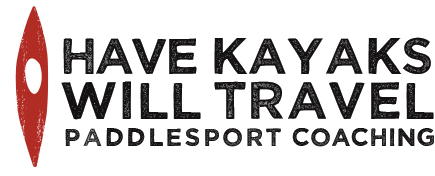If you’re jealous of the paddling opportunities and access in Scotland, Sea Kayak with Gordon Brown, volume 3 will only exacerbate that emotion. This two-and-a-half-hour DVD begins with “Handling Emergency Situations,” which involves staged rescues by HM Coastguard helicopter and Royal National Lifeboat Institution boats. Why can’t we do that? The scenarios aren’t extreme; they’re quite realistic examples of situations that start out small and grow to be life threatening, such as losing a paddle. They also aren’t entirely simulated; Gordon and friends actually do get cold and suffer bruising from parachute flares. Best of all, they answer questions about the effectiveness of various types of emergency equipment we all carry but few of us ever get to use. This dramatic, 46-minute segment includes everything from initiating a distress call to attracting the attention of rescuers to preparing for the downdraft of a helicopter–all the things you need to know to facilitate a smooth rescue. It also takes a realistic look at how well flares, strobes and other signaling devices work in rough seas, shows us the operation center where calls are received and rescues are coordinated, and discusses what can be learned from the deliberate mistakes Gordon and friends make in these scenarios. Did we mention being jealous? At the end of “Handling Emergency Situations,” we realized that Andy was Andy Stamp, BCU Level 5 sea kayak coach. And he is just one of many denizens of our paddling bookshelf and CD rack who appear in this DVD. The 47-minute “Navigation” section features Franco Ferrero, whose friendly book on navigation helped us gain basic competence without getting overwhelmed by the “dark art” of finding your way. Ferrero’s approach is keeping it simple, and his explanations of tides, bearings, charts and transits are accessible and practical. And then there’s Rowland Woollven of Wilderness Emergency Medical Services Institute, who presents the 20-minute section on “First Aid Kits” (which includes handling medical emergencies). Woollven shares what he carries in his “ouch pouch” and first-aid kit, and demonstrates a few first aid techniques, but emphasizes that each paddler should carry what’s appropriate to his or her training and needs. If you’re expecting a video first-aid course, this isn’t it. Rather, he makes a compelling case for taking a wilderness first aid course. The last section of this video is the weakest. “Rolling Clinic” involves Gordon Brown working with a group of students at a swimming pool. It’s clearly not staged; these are real students with little or no rolling experience. What made us cringe was watching them repeat errors without correction, reinforcing bad habits that become increasingly difficult to break. After all, it was in Gordon Brown’s book, Sea Kayak: A Manual for Intermediate and Advanced Sea Kayakers, that we first encountered...
Rough water rescue practice
North winds at last! The forecast was 3- to 5-foot waves, so we hastened to the lake. This time we wore drysuits, only to find that some of the surface water had returned and the water was relative balmy–somewhere in the mid-60s.We love practicing rescues, but don’t often have an opportunity to try them in the conditions in which we’re most likely to need them. (Especially this year, when we’ve had very few big wave days.) So we took turns putting each other and ourselves back in our boats. Alec and Hannah complete a t-rescue. Alec completes a scramble (cowboy) self-rescue. Every time we do this, we are struck by how well these rescues work in conditions, but how essential it is to move quickly and hold on to everything (boats, paddles, people). We typically teach rescues in calm conditions in which paddlers are unlikely to capsize and try to convince our students that in real conditions, any lapse of attention can lead to serious complications. If the rescuer lets go of the casualty’s boat, it can whip away in the wind. If the casualty lets go of his or her boat or the rescuer’s deck lines, they can quickly be separated. If anybody lets go of a paddle, they may never see it again. Working on rescues in real conditions is the best test of your...







